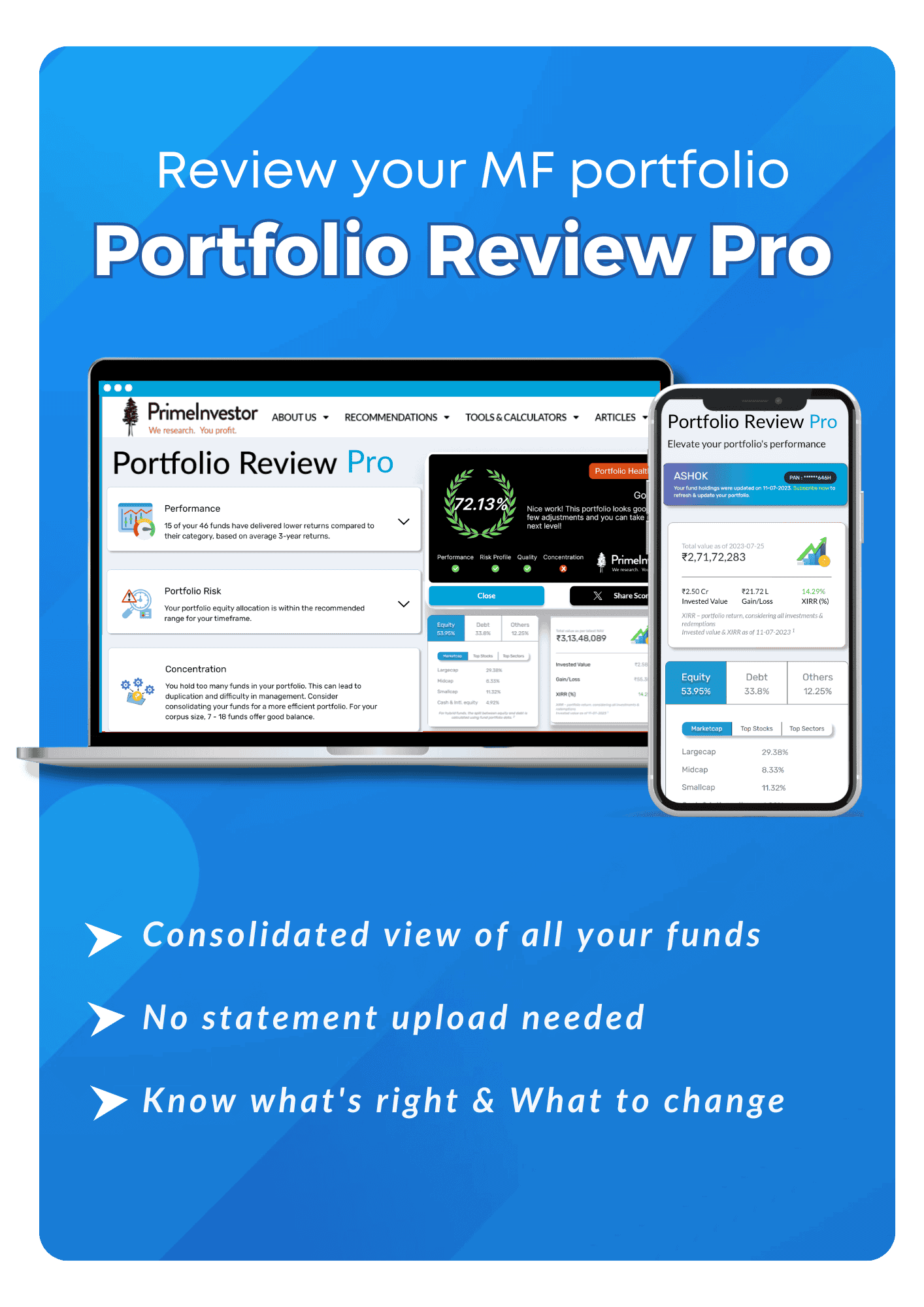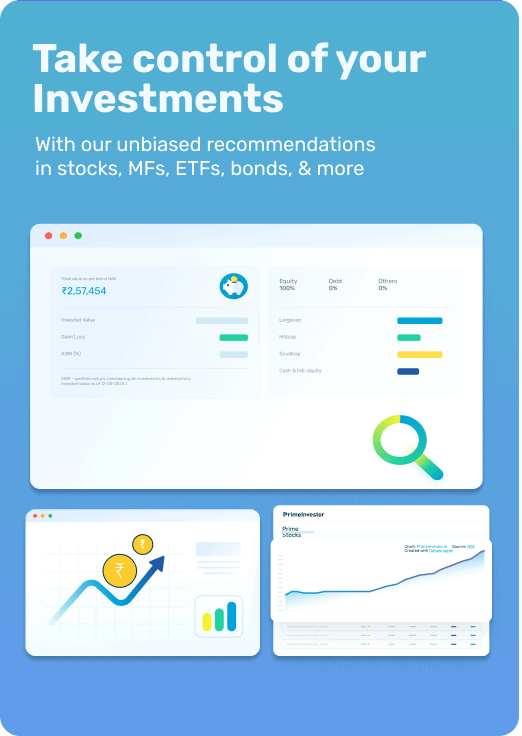After the Bharat Bond ETF series, there is yet another unique target-maturity debt ETF – Nippon ETF CPSE Bond Plus SDL – coming your way. Should you go for it?
Before we move into details about the new ETF, you might want to know about target maturity or defined maturity ETFs and how they are different from FMPs. You can read all about it here: https://www.primeinvestor.in/the-emergence-of-a-new-class-of-etf-in-debt/

Nippon India ETF Nifty CPSE Bond Plus SDL- 2024 Maturity (CPSE Bond Plus SDL ETF) is an open-ended target maturity debt ETF. What that means is that the ETF will buy and hold the underlying instruments (in line with the index) until maturity in September 2024. Being open-ended, you will be able to sell the ETF anytime in the market, subject to liquidity.
The ETF’s initial offer will close on November 9. Post that, it will be traded like any other ETF on the exchanges.
About Nippon India ETF Nifty CPSE Bond Plus SDL
This ETF will mirror a new index called the Nifty CPSE Bond Plus SDL Sep 2024 50:50 Index. This index has 50% in AAA-CPSE bonds and 50% in state development loans (SDL) issued by various states. It will be taxed like any other debt fund, with indexation benefit kicking in after 3 years.
The criteria for picking the bonds would be as follows:
- The bonds/SDLs should necessarily mature between October 1, 2023 to September 30, 2024 to be included in this index.
- The CPSE bonds will be the top 10 eligible AAA-rated bonds based on a liquidity score. Such liquidity score will consider traded value, number of days traded and number of trads of all the eligible bonds of the issuers for 1 year ending September 2020. Only 1 bond per issuer will be eligible based on the liquidity score.
- An equal weight of 5% each will be given to each CPSE bond.
- The SDLS will be based on the top 5 outstanding issuance amounts of states/union territories. This is again done to ensure liquidity of the eligible securities.
- Each SDL will have a weight of 10% (totaling to 5 SDLs).
Rebalancing will be done every quarter when instruments breach 15% weight or when the index removes or adds securities to fulfill its mandate.
Why this is unique
We are not going to discuss PSU bonds here as many of you are familiar with its credit quality as well as risk, especially after the entry of Bharat Bond. The CPSE Bond Plus SDL ETF primarily differs from Bharat Bond in its inclusion of SDLs. While SDLs did not enjoy popularity with FPIs who preferred G-secs instead, the RBI has been encouraging states to promote SDLs with FPIs. It has also taken initiatives to promote it among smaller investors.
The following are some of the points to note about SDLs.
#1Known for attractive yields
SDLS are considered lucrative options as their coupons are far more attractive than the central government securities. The chart below will show you the 10-year G-sec yield and SDL yields over the past 3 years. (For the uninitiated coupon rate is not the same as yield. You may want to understand more about YTM here)
You can see that in 2018 and almost half of 2019, the yields in SDLs were highly lucrative, going up to 8.7%.
#2 Considered sub-sovereign
Many of you ask us whether SDLs have sovereign guarantee. According to the RBI Governor Shaktikanta Das (as quoted in media), there is an implicit sovereign guarantee for SDLs as the RBI debits a state government’s accounts and makes the repayment on the due date of the SDLs. Hence, while directly not sovereign, the mechanism of payment appears to prevent any default.
Yet, because the states’ financial position vary significantly and some of their deficit position is quite dire, states’ ability to borrow comes only at a higher interest rate than what government securities or even top public sector bonds pay to borrow. This is the reason why many MFs with an accrual strategy stocked up on SDLs when yields were much higher than now. But for long, retail investors could not participate in this lucrative segment directly.
#3 Still not within retail reach
After the RBI notified that retail investors could participate in SDLs in November 2019, NSE (as well as some brokers) facilitated the same through its e-Gsec platform. But the option was little known and complex for a retail investor with little knowledge of the debt market.
Besides, not all SDLs that are traded in the market have sufficient liquidity. In the secondary market, trades of SDLs issued by even high-borrowing, large states are often just 1 or 2 with high value of several crores, thus making it inaccessible for retail investors.
While mutual funds do hold SDLs, the present ETF option with its 50% exposure provides focused exposure to buy and hold these instruments along with high-quality corporate bonds. Mutual funds also may not always hold SDLs as part of their portfolio.
Is it attractive now?
Coming back to the CPSE Bond Plus SDL ETF, let us understand the index constituents and the current yields before answering this question.
#1 The index constituents
The table below gives you the current index constituents. If we take the 5 SDLs listed in the index, barring Uttar Pradesh SDL (large borrower) which is absent from this index, they are among the top in terms of using ‘market borrowing’ (based on RBI data) to meet their expenditure.
Next, if you do a quick check on the fiscal deficit of these states (table below) based on RBI data, you will see that barring the Andhra Pradesh SDL all other state deficits are below the all-state gross fiscal deficit. In essence, we know that the papers are from states that borrow a lot but have kept their deficit in check.
Bottomline – the index has large SDLs with decent deficit situation. That means their credit quality is fine but at the same time, they are not going to be the highest yielding among state government papers as they are not necessarily the riskiest.
Now let’s move to the all-important point on whether the yields are attractive now.
#2 Current yield of SDLs
Let’s take the 10-year SDL first to understand where yields are. The 10-year SDL index by CCIL is a 14- SDL portfolio selected for this purpose by CCIL and used as a benchmark to track 10-year SDL yields.
Our first graph, earlier in this article, would have showed you the compression in yields in the 10-year SDL, after it spiked in April 2020. The RBI’s open market operations of SDLs further compressed the yields in October 2020. Effectively, the spread – that is the excess return that SDL gives over a 10-year G-sec – reduced from 72 basis points a month ago to 47 basis points now. That means a quick second rally has already happened within the past year.
If you wish to understand this better, let us take the SDL index’ returns over the past year. The yield compression has caused the TRI index (which includes coupon accrual between payments and capital gains) to generate a 12% return on the 10-year SDL index. In other words, quite a bit of capital gain returns is already captured.
Now let us come to the 4-year – 2024 maturing SDL portfolio for this ETF. Data from NSE suggests that the YTM of this index as of October 30 was 5.35%. This YTM comes from the weighted yields of SDLs and the public sector bonds. For G-sec, similar period yield is at 4.973%. That leaves a thin spread of about 40 basis points for you.
As we have maintained in earlier calls, the possibility of a big rally from this point in bonds (be it PSU bonds or SDLs) appear low, especially give 7-8 months of steady uptick in consumer inflation and recent macro indicators pointing at a revival. If this be the case, the current yield of this ETF is not a good one to lock into.
So, moral of this story: This ETF is a great product. But the current yield does not offer a good entry point. If you do believe that a rate hike can happen in the next year or two, it may still give you plenty of time (the ETF matures only In 2024) to buy this ETF at a higher yield and enjoy reasonable safety and returns.
We will watch for the rate cycle and keep track of this ETF’s tracking error and liquidity and alert you when the opportunity arises.
P.S: Please do not ask us for SDL recommendations. We are not providing any at this juncture.





12 thoughts on “Nippon India ETF Nifty CPSE Bond Plus SDL – Should you invest?”
Can the investors hold this for 3 years and avail indexation benefits? Since the scheme holds papers maturing in September 2023, looks does it allow to complete 3years though it is open ended? Thank you.
It does not matter what the scheme holds. As long as you hold for at least 3 years, you will get indexation benefits. thanks, Vidya
Nice useful article. I am happy to note that you not only explained the product/concept but also made it cleared that considering low current interest rate scenario, it is not advisable to go for this. Good.
Thank you! Vidya
Excellent article which articulates clearly for retail investor like me and adds to my knowledge asset. Happy to learn new things from your team. Have nice day!
Thanks!
Thanks for the article . Do you mean to wait for interest rate cycle change ? If interest rates goes up then NAV will get affected . In case of 3 years period better than Bharat bonds ? Thanks.
Yes. YEs NAV will decline right? So wouldn’t that be a better time to buy, given that you cannot change the coupon rate much in this buy and hold fund? Bharat Bond and this fund are not same duration. But yes it is betetr than the shorter tenure 2023 Bharat Bond. Vidya
Thank you for useful articles. I dont have a Demat AC at this point, so if I want to have exposure to such ETFs via MF route(FoF), could you please provide some clue if such product exists with MFs and so what are them. Thank you
Hello Sir, There is Bharat bond FoF.But that does not have SDLs. None on the FoF category have this combination. thanks, Vidya
Nippon Dynamic Bond fund is a good choice if you want to take exposure to 10yr SDLs
Can we be sure they will hold 10-year SDLs when rates go up?Unless a fund has a mandate to, it is hard to go based on current portfolios. 🙂 thanks, Vidya
Comments are closed.